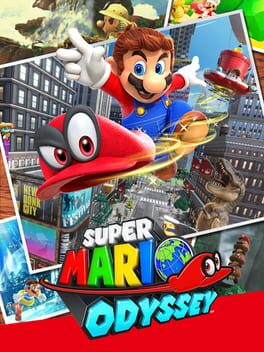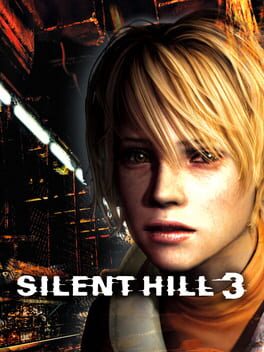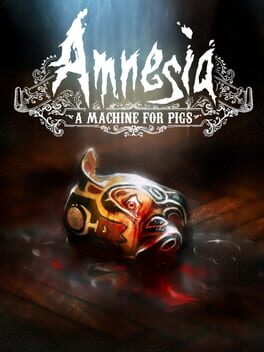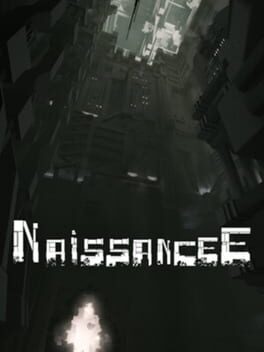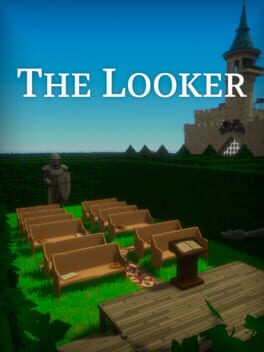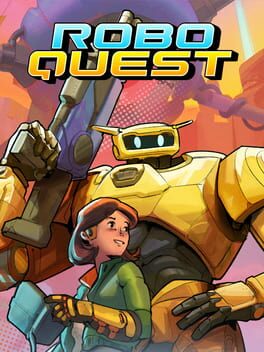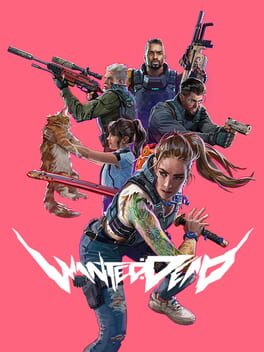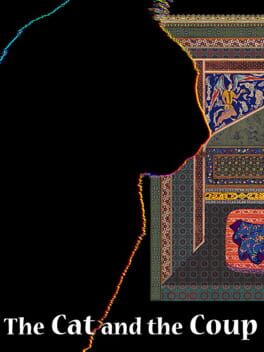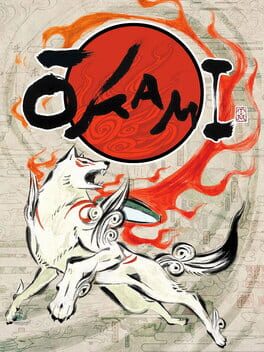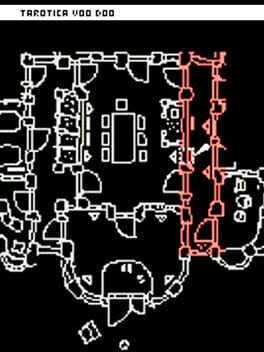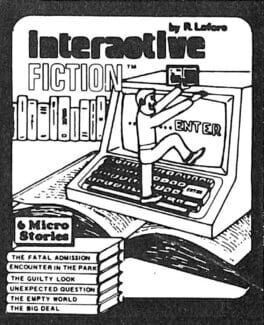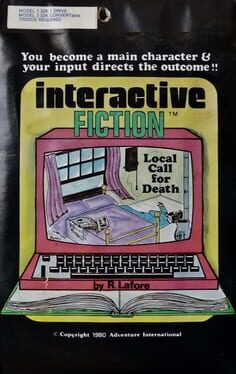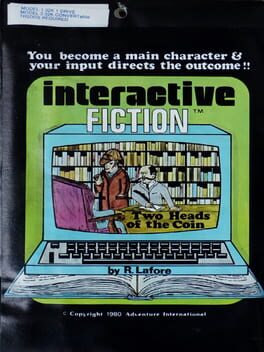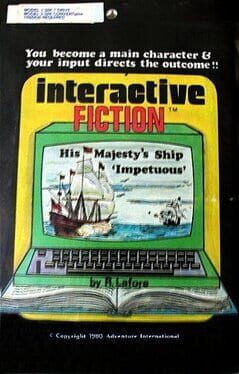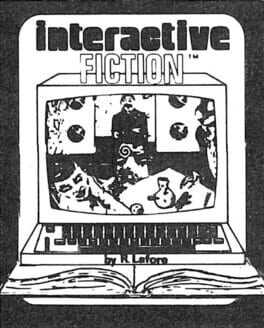jebhappy
109 reviews liked by jebhappy
Elden Ring
2022
This review contains spoilers
"You have died, and the Nexus has trapped your soul."
"You cannot escape the Nexus."
----------------------------------------------------------------------------------
CW: Brief discussion on the game's use of rape
In Elden Ring, you can never discover anything once. That was the thought that entered my head early in the experience and never quite left it. One of the most evocative parts of the game's genuinely stunning art direction is the walking cathedral, a strange and arresting colossus that stumbles across the Weeping Peninsula, each step ringing the bell that hangs beneath its torso. It was a sight of strange, beautiful magic, the kind of which these games have been good at in the past.
Except, to describe this creature in the singular would be inaccurate. Because Walking Cathedrals appear all over the world of Elden Ring, each one identical in appearance, each one performing an identical, express mechanical function for the player. This cannot be left alone as a strange, unique beast, it has to be reduced to a Type of Content a player can engage with over and over again for a characterless transaction of pure mechanics. It is the excitement of coming across something esoteric that the Souls games have made a core part of their identity, utterly commodified and made into the exact same arc that applied to Assassin's Creed the moment climbing a tower to survey the environment and taking a leap of faith into a haystack below shifted from an exciting and evocative moment into a rote and tiresome mechanical interaction.
Because, that's right everyone, Dark Souls Is Now Open World. Not an open world in the same way that Demon's Souls, Dark Souls, or Dark Souls II were, where you could freely venture down different paths to different bosses and take things in an order outside of the game's expected leveling curve. No, this is an Open World as we understand it today: an enormous ocean of discrete repeated Activities dotted with islands of meaningful bespoke design. There's plenty of stuff to do in this world, but it's all of a specific type - in a catacomb you will navigate stone gargoyles and chalice dungeon designs to a lever that will open a door near the entrance that will contain a boss that you've likely found elsewhere in the world, and will be filled with stone gargoyles. Mines will be filled with mining rock-people and upgrade materials. Towers will have you find three spectral creatures around them in order to open them up and obtain a new Memory Slot. Camps will contain a patrolling enemy type and some loot. Even genuinely enchanting vistas and environments get their space to be repeated in slight variations. Boss battles too will be repeated endlessly, time and time again, with delightful designs like the Watchdog tragically becoming something I sighed and was annoyed to see crop up half-a-dozen times over the course of the adventure, and I was truly, deeply annoyed at fighting no less than about ten or twelve Erdtree Avatars and Dragons, with whom the moves never change and the fight plays out the exact same way every single time.
The first time I discovered these things, I was surprised, delighted even, but by even the second time, the truth that these are copied-and-pasted across the entirety of the Lands Between in order to pad it out became readily apparent, and eventually worn away even the enthusiasm of that first encounter. When I look back on my genuine enjoyment of the first battle with the Erdtree Avatar, I can only feel like an idiot for not realizing that this fight would be repeated verbatim over and over and become less fun every single time. When you've seen one, you've really seen all of them, and this means that by the time you leave Limgrave, you've already seen everything the Open World has to offer.
This is, of course, to be expected. Open world games simply have to do this. They are an enormous effort to bring into life, and the realities of game production mean that unless you're willing to spend decades on one game, you're going to have to be thrifty with how you produce content. I expect this, I understand this. Fallout: New Vegas is probably my favorite Open World game, but its world is also filled with this template design. But what's to be gained from this in a Dark Souls game? Unlike contemporaries like Breath of the Wild, your verbs of interaction in these games are frighteningly limited, with almost all of the experience boiling down to fighting enemies, and without a variety of interactions, the lack of variety in the huge amounts of content stands out all the more. Does fighting the same boss over and over and traversing the same cave over and over make Souls better? Even if you choose to just ignore all of these parts of the Open World (which is far easier said than done, as due to a very harsh leveling curve and the scarcity of crucial weapon upgrade materials outside of The Mines, the game's design absolutely pushes towards you engaging in these repetitious activities), the Legacy Dungeons that comprise the game's bespoke content are functionally completely separate from the Open World, with not even your Horse permitted to enter. This is no Burnout: Paradise or Xenoblade Chronicles X, which retooled the core gameplay loop to one where the open world was absolutely core to the design: this is a series of middling Dark Souls levels scattered among an open world no different from games like Far Cry or Horizon: Zero Dawn that many Souls fans have historically looked down on, and the game is only worse for it.
NPC storylines in particular suffer massively, as the chances of you stumbling upon these characters, already often quite annoying in past games, are so low as to practically require a wiki if you want to see the end of multiple questlines. However, that assumes that you will want to see the end of these stories and that you are invested in this world, and I decidedly Was Not. Souls games have always had suspect things in them that have gone largely uninterrogated but Elden Ring really brings that ugliness to the surface, with rape being an annoyingly present aspect of the backstories of many characters, and even having multiple characters threaten to rape you, none of which is deployed in a way that is meaningful and is just insufferable edgelord fantasy writing, and the same could be said of the grimdark incest-laden backstory, the deeply suspect trans panic writing surrounding one of the characters, and the enthusiastic use of Fantasy Racism tropes in the form of the Demi-Humans. I remain convinced that George RR Martin's involvement in this game was little more than a cynical publicity stunt, but certainly the game's writing indulges in many of that man's worst excesses, whilst having almost none of his strengths.
None of this is to say that Elden Ring is devoid of enjoyment. While the fact that it did hit just in time for a manic-depressive mood that made me perfectly suited to play a game I could just mindlessly play for a couple of weeks, I did see it through to the end in that time, even if I did rush to the end after a certain point. From Software's artists remain some of the best in the industry, with some incredible environments and boss designs that deserve Olympic gold medals for how much heavy-lifting they're doing to keep the experience afloat. I loved being kidnapped by chests into other parts of the world, and I wish it happened more than a couple of front-loaded times. But the enjoyment I had in it never felt like stemmed from the open world, and even its highest points don't hang with the best bits of the prior installments. Stormveil is probably the level design highlight of the game but it already fades from my mind in comparison to the likes of Central Yharnam or the Undead Burg or the Dragon Shrine. Indeed, the fact that they exist as islands in an ocean of vacuous space between them precludes the so-called "Legacy Dungeons" of this game from having the satisfying loops and interconnections that are often the design highlights of prior entries. The bosses are a seriously uneven mixed bag as well; even setting aside the repetition, as the nasty trend of overturned bosses that started in Dark Souls III rears its unfortunate head again. The superboss Melania is an interesting design utterly ruined by her obscene damage output, and my personal highlight of the game, Starscourge Radagon, who is the only boss fight that felt like it played to the things that Elden Ring brought to the table, and is a moment among the series that the game can truly claim as it's very own...but the tuning of the fight prevented it from being the triumphant coming-together moment that it is clearly attempting for many of my friends, who left the fight feeling that it was just annoying and tedious. Modern From Software could never make a fight like Maiden Astrea again because they'd insist on making her really hard in a way that actively detracts from the emotional experience in the fight. Boss fights can be about more than just providing a challenge, and I think From has forgotten that.
Taken as a series of its legacy dungeons, of its finest moments, I think Elden Ring would only be a middling one of these games. The additions to the formula feel anemic and unbalanced, the multiplayer implementation is honestly a quite considerable step back from prior games (the decision to have the majority of invasions only occur during co-operation feels like an attempt to weed out trolls picking on weaker players but in reality what it does is make equal fights are next-to-impossible and put Seal-Clubbers in a place where they are the only players who can effectively invade, a completely baffling decision), but it's really the open world I keep coming back to as the reason this game doesn't work. Not only does it add nothing that wasn't already present in better ways in prior games, but it actively detracts from the experience. The promise of the Open World is one of discovery, of setting off in uncharted directions and finding something new, but do Open Worlds actually facilitate this any better than more linear games? I don't know if they do. I felt a sense of discovery and finding something in so many of these games, even the most linear ones, and felt it stronger because the game was able to use careful, meticulous level design to bring out those emotions. Walking out of a cave and seeing Irithyll of the Boreal Valley, or Dead Man's Wharf stretch out before me, were moments of genuine discovery, and they would not be improved if I found six more Dead Man's Wharfs throughout the game. Contrary to their promise, in my experience, the open world, rather than create a sense of discovery, undermine it due to the compromises necessary to create these worlds. All the openness does for your discoveries is let you approach them from a slightly different angle as everyone else.
That is, if you can even claim to have discovered anything in the first place. To call Elden Ring derivative of prior games in this milieu would be a gross understatement. I am far from the first person to note that the game's much-hyped worldbuilding is largely content to regurgitate Souls Tropes with the Proper Nouns replaced with much worse ones, but it goes beyond that - entire questlines, plot beats, character arcs, dungeon designs, enemies, and bosses are lifted wholesale from prior games practically verbatim. More often than not Elden Ring feels closer to a Greatest Hits album than a coherent piece in and of itself, a soulless and cynical repackaging of prior Souls Classics, irrevocably damaged by being torn from the original context from which they belonged. I'm not a fan of Dark Souls III, in part because it too is also a game that leans on repetition of prior games, but at the very least the game was about those repetitions, where yes, old areas and characters would be repeated, but at least it was thematically resonant with what the game was doing. Elden Ring can't even claim that. Whatever this shallow mess of a narrative, easily the worst of the franchise thus far by my reckoning, is going for, it is done no favors by being this stitched-together Frankenstein of Souls.
I was particularly shocked by the sheer ferocity with which the game steals from the fan-favorite Bloodborne. Quick, tell me if you've heard this one before: you encounter a hunched, bestial foe, who fights you with their fists, but once you get their health halfway down, the battle stops, a cutscene plays, where they speak coherently, summon a blade from their past, and stand with their former dignity restored, the music changes, and their name is revealed to be "X the Y Blade". Or what about a hub area, separated in its own liminal space from the rest of the map, that can be discovered in its True Form in the material world? What about when that hub area is wreathed in spectral flame and begins to burn as the final hours of the game is nigh? These are far from the only examples, as there are multiple enemies and ideas throughout the game that are shamelessly lifted from my personal favorite From Software effort, but these stand out as the most noxious of all, as they simply repeat beats that were effective in the game they originated from because the game was able to build to them and have them resonate with the rest of the experience. You cannot just graft things whole cloth from prior work onto a new one and expect it to work as a coherent piece, the very prospect is ridiculous.
When Elden Ring did all this, my jaw about hit the floor from the sheer unmitigated gall. When it chose to conclude itself with a straight-faced Moon Presence reference, complete with an arena that directly evokes the Hunter's Dream, I just had to laugh. The final statement the game made on itself, the bullet point it chose to put on the experience, was "Remember Bloodborne? That was good, wasn't it?" Because in many ways, that really was a perfect conclusion to this game.
While it would be a mistake to claim, as people seem increasingly eager to, that Souls emerged entirely out of the magical ocean that is Hidetaka Miyazaki's unparalleled genius or whatever, as these games have always drawn heavy inspiration from properties like Berserk, Book of the New Sun, and The Legend of Zelda, and were built on top of a framework clearly established by past Fromsoft series King's Field, the reason I think that myself and many others were initially enthralled by the promise of Demon's Souls or Dark Souls was because they were decidedly different. Their esoterica, willingness to buck modern design conventions and hugely evocative online elements were why these games set imaginations alight so strongly, and proved enormously influential for the past decade of game design.
Demon's Souls felt like something new. And while successive games in this series have felt far less fresh, none of them have felt as utterly exhausted as Elden Ring: a final statement from the designers and writers at From Software that they have officially Ran Out of Ideas, that the well has long gone dry, that all they can do is to hastily staple on the modern design trends they once rejected onto a formula that does not gel with them, and that they are wandering without life through a never-ending cycle of their own creation, branded by the Darksign. Perhaps it's no surprise that their least inventive, least consistent, and least creative game since Demon's Souls is also by far their most successful. Once From Software defied conventions and trends, and now, they are consumed by them.
----------------------------------------------------------------------------------
"You have died, and the Nexus has trapped your soul."
"You cannot escape the Nexus."
"You cannot escape the Nexus."
----------------------------------------------------------------------------------
CW: Brief discussion on the game's use of rape
In Elden Ring, you can never discover anything once. That was the thought that entered my head early in the experience and never quite left it. One of the most evocative parts of the game's genuinely stunning art direction is the walking cathedral, a strange and arresting colossus that stumbles across the Weeping Peninsula, each step ringing the bell that hangs beneath its torso. It was a sight of strange, beautiful magic, the kind of which these games have been good at in the past.
Except, to describe this creature in the singular would be inaccurate. Because Walking Cathedrals appear all over the world of Elden Ring, each one identical in appearance, each one performing an identical, express mechanical function for the player. This cannot be left alone as a strange, unique beast, it has to be reduced to a Type of Content a player can engage with over and over again for a characterless transaction of pure mechanics. It is the excitement of coming across something esoteric that the Souls games have made a core part of their identity, utterly commodified and made into the exact same arc that applied to Assassin's Creed the moment climbing a tower to survey the environment and taking a leap of faith into a haystack below shifted from an exciting and evocative moment into a rote and tiresome mechanical interaction.
Because, that's right everyone, Dark Souls Is Now Open World. Not an open world in the same way that Demon's Souls, Dark Souls, or Dark Souls II were, where you could freely venture down different paths to different bosses and take things in an order outside of the game's expected leveling curve. No, this is an Open World as we understand it today: an enormous ocean of discrete repeated Activities dotted with islands of meaningful bespoke design. There's plenty of stuff to do in this world, but it's all of a specific type - in a catacomb you will navigate stone gargoyles and chalice dungeon designs to a lever that will open a door near the entrance that will contain a boss that you've likely found elsewhere in the world, and will be filled with stone gargoyles. Mines will be filled with mining rock-people and upgrade materials. Towers will have you find three spectral creatures around them in order to open them up and obtain a new Memory Slot. Camps will contain a patrolling enemy type and some loot. Even genuinely enchanting vistas and environments get their space to be repeated in slight variations. Boss battles too will be repeated endlessly, time and time again, with delightful designs like the Watchdog tragically becoming something I sighed and was annoyed to see crop up half-a-dozen times over the course of the adventure, and I was truly, deeply annoyed at fighting no less than about ten or twelve Erdtree Avatars and Dragons, with whom the moves never change and the fight plays out the exact same way every single time.
The first time I discovered these things, I was surprised, delighted even, but by even the second time, the truth that these are copied-and-pasted across the entirety of the Lands Between in order to pad it out became readily apparent, and eventually worn away even the enthusiasm of that first encounter. When I look back on my genuine enjoyment of the first battle with the Erdtree Avatar, I can only feel like an idiot for not realizing that this fight would be repeated verbatim over and over and become less fun every single time. When you've seen one, you've really seen all of them, and this means that by the time you leave Limgrave, you've already seen everything the Open World has to offer.
This is, of course, to be expected. Open world games simply have to do this. They are an enormous effort to bring into life, and the realities of game production mean that unless you're willing to spend decades on one game, you're going to have to be thrifty with how you produce content. I expect this, I understand this. Fallout: New Vegas is probably my favorite Open World game, but its world is also filled with this template design. But what's to be gained from this in a Dark Souls game? Unlike contemporaries like Breath of the Wild, your verbs of interaction in these games are frighteningly limited, with almost all of the experience boiling down to fighting enemies, and without a variety of interactions, the lack of variety in the huge amounts of content stands out all the more. Does fighting the same boss over and over and traversing the same cave over and over make Souls better? Even if you choose to just ignore all of these parts of the Open World (which is far easier said than done, as due to a very harsh leveling curve and the scarcity of crucial weapon upgrade materials outside of The Mines, the game's design absolutely pushes towards you engaging in these repetitious activities), the Legacy Dungeons that comprise the game's bespoke content are functionally completely separate from the Open World, with not even your Horse permitted to enter. This is no Burnout: Paradise or Xenoblade Chronicles X, which retooled the core gameplay loop to one where the open world was absolutely core to the design: this is a series of middling Dark Souls levels scattered among an open world no different from games like Far Cry or Horizon: Zero Dawn that many Souls fans have historically looked down on, and the game is only worse for it.
NPC storylines in particular suffer massively, as the chances of you stumbling upon these characters, already often quite annoying in past games, are so low as to practically require a wiki if you want to see the end of multiple questlines. However, that assumes that you will want to see the end of these stories and that you are invested in this world, and I decidedly Was Not. Souls games have always had suspect things in them that have gone largely uninterrogated but Elden Ring really brings that ugliness to the surface, with rape being an annoyingly present aspect of the backstories of many characters, and even having multiple characters threaten to rape you, none of which is deployed in a way that is meaningful and is just insufferable edgelord fantasy writing, and the same could be said of the grimdark incest-laden backstory, the deeply suspect trans panic writing surrounding one of the characters, and the enthusiastic use of Fantasy Racism tropes in the form of the Demi-Humans. I remain convinced that George RR Martin's involvement in this game was little more than a cynical publicity stunt, but certainly the game's writing indulges in many of that man's worst excesses, whilst having almost none of his strengths.
None of this is to say that Elden Ring is devoid of enjoyment. While the fact that it did hit just in time for a manic-depressive mood that made me perfectly suited to play a game I could just mindlessly play for a couple of weeks, I did see it through to the end in that time, even if I did rush to the end after a certain point. From Software's artists remain some of the best in the industry, with some incredible environments and boss designs that deserve Olympic gold medals for how much heavy-lifting they're doing to keep the experience afloat. I loved being kidnapped by chests into other parts of the world, and I wish it happened more than a couple of front-loaded times. But the enjoyment I had in it never felt like stemmed from the open world, and even its highest points don't hang with the best bits of the prior installments. Stormveil is probably the level design highlight of the game but it already fades from my mind in comparison to the likes of Central Yharnam or the Undead Burg or the Dragon Shrine. Indeed, the fact that they exist as islands in an ocean of vacuous space between them precludes the so-called "Legacy Dungeons" of this game from having the satisfying loops and interconnections that are often the design highlights of prior entries. The bosses are a seriously uneven mixed bag as well; even setting aside the repetition, as the nasty trend of overturned bosses that started in Dark Souls III rears its unfortunate head again. The superboss Melania is an interesting design utterly ruined by her obscene damage output, and my personal highlight of the game, Starscourge Radagon, who is the only boss fight that felt like it played to the things that Elden Ring brought to the table, and is a moment among the series that the game can truly claim as it's very own...but the tuning of the fight prevented it from being the triumphant coming-together moment that it is clearly attempting for many of my friends, who left the fight feeling that it was just annoying and tedious. Modern From Software could never make a fight like Maiden Astrea again because they'd insist on making her really hard in a way that actively detracts from the emotional experience in the fight. Boss fights can be about more than just providing a challenge, and I think From has forgotten that.
Taken as a series of its legacy dungeons, of its finest moments, I think Elden Ring would only be a middling one of these games. The additions to the formula feel anemic and unbalanced, the multiplayer implementation is honestly a quite considerable step back from prior games (the decision to have the majority of invasions only occur during co-operation feels like an attempt to weed out trolls picking on weaker players but in reality what it does is make equal fights are next-to-impossible and put Seal-Clubbers in a place where they are the only players who can effectively invade, a completely baffling decision), but it's really the open world I keep coming back to as the reason this game doesn't work. Not only does it add nothing that wasn't already present in better ways in prior games, but it actively detracts from the experience. The promise of the Open World is one of discovery, of setting off in uncharted directions and finding something new, but do Open Worlds actually facilitate this any better than more linear games? I don't know if they do. I felt a sense of discovery and finding something in so many of these games, even the most linear ones, and felt it stronger because the game was able to use careful, meticulous level design to bring out those emotions. Walking out of a cave and seeing Irithyll of the Boreal Valley, or Dead Man's Wharf stretch out before me, were moments of genuine discovery, and they would not be improved if I found six more Dead Man's Wharfs throughout the game. Contrary to their promise, in my experience, the open world, rather than create a sense of discovery, undermine it due to the compromises necessary to create these worlds. All the openness does for your discoveries is let you approach them from a slightly different angle as everyone else.
That is, if you can even claim to have discovered anything in the first place. To call Elden Ring derivative of prior games in this milieu would be a gross understatement. I am far from the first person to note that the game's much-hyped worldbuilding is largely content to regurgitate Souls Tropes with the Proper Nouns replaced with much worse ones, but it goes beyond that - entire questlines, plot beats, character arcs, dungeon designs, enemies, and bosses are lifted wholesale from prior games practically verbatim. More often than not Elden Ring feels closer to a Greatest Hits album than a coherent piece in and of itself, a soulless and cynical repackaging of prior Souls Classics, irrevocably damaged by being torn from the original context from which they belonged. I'm not a fan of Dark Souls III, in part because it too is also a game that leans on repetition of prior games, but at the very least the game was about those repetitions, where yes, old areas and characters would be repeated, but at least it was thematically resonant with what the game was doing. Elden Ring can't even claim that. Whatever this shallow mess of a narrative, easily the worst of the franchise thus far by my reckoning, is going for, it is done no favors by being this stitched-together Frankenstein of Souls.
I was particularly shocked by the sheer ferocity with which the game steals from the fan-favorite Bloodborne. Quick, tell me if you've heard this one before: you encounter a hunched, bestial foe, who fights you with their fists, but once you get their health halfway down, the battle stops, a cutscene plays, where they speak coherently, summon a blade from their past, and stand with their former dignity restored, the music changes, and their name is revealed to be "X the Y Blade". Or what about a hub area, separated in its own liminal space from the rest of the map, that can be discovered in its True Form in the material world? What about when that hub area is wreathed in spectral flame and begins to burn as the final hours of the game is nigh? These are far from the only examples, as there are multiple enemies and ideas throughout the game that are shamelessly lifted from my personal favorite From Software effort, but these stand out as the most noxious of all, as they simply repeat beats that were effective in the game they originated from because the game was able to build to them and have them resonate with the rest of the experience. You cannot just graft things whole cloth from prior work onto a new one and expect it to work as a coherent piece, the very prospect is ridiculous.
When Elden Ring did all this, my jaw about hit the floor from the sheer unmitigated gall. When it chose to conclude itself with a straight-faced Moon Presence reference, complete with an arena that directly evokes the Hunter's Dream, I just had to laugh. The final statement the game made on itself, the bullet point it chose to put on the experience, was "Remember Bloodborne? That was good, wasn't it?" Because in many ways, that really was a perfect conclusion to this game.
While it would be a mistake to claim, as people seem increasingly eager to, that Souls emerged entirely out of the magical ocean that is Hidetaka Miyazaki's unparalleled genius or whatever, as these games have always drawn heavy inspiration from properties like Berserk, Book of the New Sun, and The Legend of Zelda, and were built on top of a framework clearly established by past Fromsoft series King's Field, the reason I think that myself and many others were initially enthralled by the promise of Demon's Souls or Dark Souls was because they were decidedly different. Their esoterica, willingness to buck modern design conventions and hugely evocative online elements were why these games set imaginations alight so strongly, and proved enormously influential for the past decade of game design.
Demon's Souls felt like something new. And while successive games in this series have felt far less fresh, none of them have felt as utterly exhausted as Elden Ring: a final statement from the designers and writers at From Software that they have officially Ran Out of Ideas, that the well has long gone dry, that all they can do is to hastily staple on the modern design trends they once rejected onto a formula that does not gel with them, and that they are wandering without life through a never-ending cycle of their own creation, branded by the Darksign. Perhaps it's no surprise that their least inventive, least consistent, and least creative game since Demon's Souls is also by far their most successful. Once From Software defied conventions and trends, and now, they are consumed by them.
----------------------------------------------------------------------------------
"You have died, and the Nexus has trapped your soul."
"You cannot escape the Nexus."
Super Mario Odyssey
2017
The 3D Mario titles have a similar illness. They demand the collection of celestial bodies, many of which appear in obvious places or require the player to engage in gameplay gimmicks. And their tone is largely one-dimensional, to the point where the games' joyfulness devolves into smarminess. This is why I don't bow before the innovative Super Mario 64, and why when I revisited Super Mario Galaxy last year, I came away thinking, "How did I ever believe this was all-time great?" (Note: I haven't played Super Mario Sunshine, so perhaps its unusual qualities would impress me.)
Super Mario Odyssey has its fair share of stupidly hidden moons and disposable appeals to nostalgia (e.g., when fully rendered Mario transforms into super pixelated Mario). But there is a wickedness to Odyssey that makes the game more intriguing than its overwhelmingly friendly ancestors.
Cappy, a talking hat, is the most subversive figure of any mainline Mario game (I have to exclude the Mario RPGs because they always mock conventions). He represents corporate branding to the extreme: When Mario hits certain enemies or objects with Cappy, it allows him to possess things like a demon — and mark them with his patented cap and mustache. In previous Mario games, the hero gains powers by acquiring items or suits. Here, he takes away the will and agency of others, manipulating their existence. This dynamic can have disturbing connotations when it involves living creatures, but it makes Super Mario Odyssey a strangely honest game about how three-dimensional space — and everything in it — is here for our exploitation. The weird implications of using Cappy overshadow a lot of that overbearing optimistic tone that grates on my nerves. Cappy outs Nintendo's dark edges. (Fellow critic Andrew Hathaway once compared Odyssey's demented vibes to the trick in Super Mario World where Mario can sacrifice Yoshi in midair to continue platforming.)
Half the fun in Odyssey is finding out what Mario can possess. Some options resemble bizarre gags or asides, like the piece of meat or the man with the remote-controlled car, but actually lead to moons. The most substantial forms enable distinct attacks and modes of travel. While many of the possibilities involve classic Mario foes like Chain Chomps and Bullet Bills, I was drawn more to the unique additions like Spark Pylons and Pokios, the latter of which allow for some of the most compelling platforming in 3D Mario history.
Odyssey has too many limitations and too much bloat to compete with the greatest Mario games (Super Mario Bros., Mario 3, Yoshi's Island). But with Cappy's devilish capabilities and a strange assortment of locations like Metro Kingdom, Luncheon Kingdom, and Lost Kingdom, Odyssey is the most gonzo of all Mario platformers. Indeed, where can the Italian plumber go from here? The other 3D Marios didn't stoke my imagination like this. They merely granted a fleeting sort of happiness.
Super Mario Odyssey has its fair share of stupidly hidden moons and disposable appeals to nostalgia (e.g., when fully rendered Mario transforms into super pixelated Mario). But there is a wickedness to Odyssey that makes the game more intriguing than its overwhelmingly friendly ancestors.
Cappy, a talking hat, is the most subversive figure of any mainline Mario game (I have to exclude the Mario RPGs because they always mock conventions). He represents corporate branding to the extreme: When Mario hits certain enemies or objects with Cappy, it allows him to possess things like a demon — and mark them with his patented cap and mustache. In previous Mario games, the hero gains powers by acquiring items or suits. Here, he takes away the will and agency of others, manipulating their existence. This dynamic can have disturbing connotations when it involves living creatures, but it makes Super Mario Odyssey a strangely honest game about how three-dimensional space — and everything in it — is here for our exploitation. The weird implications of using Cappy overshadow a lot of that overbearing optimistic tone that grates on my nerves. Cappy outs Nintendo's dark edges. (Fellow critic Andrew Hathaway once compared Odyssey's demented vibes to the trick in Super Mario World where Mario can sacrifice Yoshi in midair to continue platforming.)
Half the fun in Odyssey is finding out what Mario can possess. Some options resemble bizarre gags or asides, like the piece of meat or the man with the remote-controlled car, but actually lead to moons. The most substantial forms enable distinct attacks and modes of travel. While many of the possibilities involve classic Mario foes like Chain Chomps and Bullet Bills, I was drawn more to the unique additions like Spark Pylons and Pokios, the latter of which allow for some of the most compelling platforming in 3D Mario history.
Odyssey has too many limitations and too much bloat to compete with the greatest Mario games (Super Mario Bros., Mario 3, Yoshi's Island). But with Cappy's devilish capabilities and a strange assortment of locations like Metro Kingdom, Luncheon Kingdom, and Lost Kingdom, Odyssey is the most gonzo of all Mario platformers. Indeed, where can the Italian plumber go from here? The other 3D Marios didn't stoke my imagination like this. They merely granted a fleeting sort of happiness.
Silent Hill 3
2003
𝘥𝘰𝘯'𝘵 𝘺𝘰𝘶 𝘵𝘩𝘪𝘯𝘬 𝘣𝘭𝘰𝘯𝘥𝘦𝘴 𝘩𝘢𝘷𝘦 𝘮𝘰𝘳𝘦 𝘧𝘶𝘯?
I’ve taken a considerable amount of time between my experiences with each of the main Silent Hill games. I played the first entry around six-seven years ago when I was still in a mutually toxic relationship and found it excellent yet downright baffling. Containing industrial and metallic horrors beyond immediate comprehension and freaky cults and oddly touching ‘chosen family’ dynamics, it pushed the limits for what I believed a PS1 title could achieve through sheer atmosphere and symbolic prowess alone. After nabbing a decently priced copy of the second game a year post my separation from said relationship (and in the wake of the pandemic), I found myself shattered by its oppressive deconstruction of a guilty conscience and the interconnective nature of trauma- both shared and isolated. How pain binds fractured souls together, and winds them up into botched and abstracted spaces of American normality to fend for themselves on a primal level. It took everything the first entry accomplished and confidently treks into bold territories that challenged the player’s allegiance to their supposed protagonist as well as call attention to their adjacent relationships to side characters- who upon the surface don’t directly contribute much to James’ arc but rather gracefully ebb and flow with the intention of supplementing the themes of the story. These first two games were exhausting to push through, almost sadist in quality and punishing in developer motivation with how they marry deeply complicated and expressionistic narratives with deliberately stunted and claustrophobic gameplay. They are, to me, a primordial testament to what the medium can achieve as singular works of art (as well as propelling the interactive possibilities of horror).
Anyways, Backloggd word salad aside, it has been nearly four years and I have finally gotten to the trilogy capper. I have since healed from my own personal traumas from the relationship that haunted my experiences with the previous two games (but still write the inflated wordy nonsense on here for the four people that actually read my reviews). That word, “healed”, succinctly captures what it felt like to play through Silent Hill III. It is an encompassing coming of age narrative about origin and birthright and interrogates the identity that we are born with versus the one we ultimately choose for ourselves. The game also wraps itself back into the thematic backbone of the first game in a clever way, weaving in ideas of evangelic persecution that removes women’s agency from their bodies and intertwining that with emotional struggles of familial belonging. Team Silent fills the game with the adequate amount of angst, grief, and sass that any teenage girl confronts as they are exposed to the chronic realities of impending adulthood. And yes, it is also very scary; utilizing some fairly cursed sound work and utterly hideous (and frequently phallic) creature designs in addition to incorporating another deliciously brooding soundtrack by Akira Yamaoka. Everything in this game carries the instinct to exercise hostility and discomfort towards Heather. Who didn’t feel that way about the world as an insecure adolescent? At the very least the sense that nothing is quite “okay” permeates much of the game’s wildly structured first half leading up to the story’s venture to the titular town in the second. The player navigates through malls, subway stations, construction sites, office buildings, and apartment complexes with the overall goal of getting home and then from there we are thrust into the familiar spaces we’ve walked before as other characters.
Despite its messy development, this is as much an effectively bittersweet culmination of the franchise’s mythology as it a deliriously unique exploration of its own themes. While I wasn’t as taken with the characterizations here as I was with the previous entry (Douglas didn’t do much for me, sorry), that remains somewhat the only sour note to an otherwise masterful game that I imagine will smooth over with time. Just writing this I look back on my nights playing this fondly and already with slight tinges of nostalgia. Every dream-like moment is so committed to utmost immersion for the player, inducing unease within the most mundane of everyday locations- at least before they are transformed into otherworldly distortions of malice incarnate. This dynamic allows for pulpy levity that toggles self-reflexive tone shifting; registering discordant humor, occasional dramatic poignancy, but mostly unhinged beats of urban surrealism. The game’s iconic visual and thematic aesthetic teamed with Heather’s infectious presence providing a much-needed cushion for the player to fall back on for reprieve against the most ungodly of manifestations, this is truly as well-rounded as horror games can be. Now if someone out there wants to lend me Silent Hill IV..
I’ve taken a considerable amount of time between my experiences with each of the main Silent Hill games. I played the first entry around six-seven years ago when I was still in a mutually toxic relationship and found it excellent yet downright baffling. Containing industrial and metallic horrors beyond immediate comprehension and freaky cults and oddly touching ‘chosen family’ dynamics, it pushed the limits for what I believed a PS1 title could achieve through sheer atmosphere and symbolic prowess alone. After nabbing a decently priced copy of the second game a year post my separation from said relationship (and in the wake of the pandemic), I found myself shattered by its oppressive deconstruction of a guilty conscience and the interconnective nature of trauma- both shared and isolated. How pain binds fractured souls together, and winds them up into botched and abstracted spaces of American normality to fend for themselves on a primal level. It took everything the first entry accomplished and confidently treks into bold territories that challenged the player’s allegiance to their supposed protagonist as well as call attention to their adjacent relationships to side characters- who upon the surface don’t directly contribute much to James’ arc but rather gracefully ebb and flow with the intention of supplementing the themes of the story. These first two games were exhausting to push through, almost sadist in quality and punishing in developer motivation with how they marry deeply complicated and expressionistic narratives with deliberately stunted and claustrophobic gameplay. They are, to me, a primordial testament to what the medium can achieve as singular works of art (as well as propelling the interactive possibilities of horror).
Anyways, Backloggd word salad aside, it has been nearly four years and I have finally gotten to the trilogy capper. I have since healed from my own personal traumas from the relationship that haunted my experiences with the previous two games (but still write the inflated wordy nonsense on here for the four people that actually read my reviews). That word, “healed”, succinctly captures what it felt like to play through Silent Hill III. It is an encompassing coming of age narrative about origin and birthright and interrogates the identity that we are born with versus the one we ultimately choose for ourselves. The game also wraps itself back into the thematic backbone of the first game in a clever way, weaving in ideas of evangelic persecution that removes women’s agency from their bodies and intertwining that with emotional struggles of familial belonging. Team Silent fills the game with the adequate amount of angst, grief, and sass that any teenage girl confronts as they are exposed to the chronic realities of impending adulthood. And yes, it is also very scary; utilizing some fairly cursed sound work and utterly hideous (and frequently phallic) creature designs in addition to incorporating another deliciously brooding soundtrack by Akira Yamaoka. Everything in this game carries the instinct to exercise hostility and discomfort towards Heather. Who didn’t feel that way about the world as an insecure adolescent? At the very least the sense that nothing is quite “okay” permeates much of the game’s wildly structured first half leading up to the story’s venture to the titular town in the second. The player navigates through malls, subway stations, construction sites, office buildings, and apartment complexes with the overall goal of getting home and then from there we are thrust into the familiar spaces we’ve walked before as other characters.
Despite its messy development, this is as much an effectively bittersweet culmination of the franchise’s mythology as it a deliriously unique exploration of its own themes. While I wasn’t as taken with the characterizations here as I was with the previous entry (Douglas didn’t do much for me, sorry), that remains somewhat the only sour note to an otherwise masterful game that I imagine will smooth over with time. Just writing this I look back on my nights playing this fondly and already with slight tinges of nostalgia. Every dream-like moment is so committed to utmost immersion for the player, inducing unease within the most mundane of everyday locations- at least before they are transformed into otherworldly distortions of malice incarnate. This dynamic allows for pulpy levity that toggles self-reflexive tone shifting; registering discordant humor, occasional dramatic poignancy, but mostly unhinged beats of urban surrealism. The game’s iconic visual and thematic aesthetic teamed with Heather’s infectious presence providing a much-needed cushion for the player to fall back on for reprieve against the most ungodly of manifestations, this is truly as well-rounded as horror games can be. Now if someone out there wants to lend me Silent Hill IV..
i feel like this game is almost universally misunderstood due to its comparisons to its predecessor. it's a game that strips a lot of the most frustrating parts of The Dark Descent and boils them down to a more narratively interesting game, but most people left disappointed because it had less jumpscares and felt more like a "walking simulator" to them.
let me tell you something, the best horror games are, in fact, mostly walking simulators! fear of the unknown that is allowed to fester and build dread over time as the rich plot themes bubble over is much more interesting than having to wait for an enemy's patrol route to go in the specific way you need to sneak by over and over and over. having an unreliable narrator who is much more of a character than a near-blank slate everyman is wholly more powerful. also, the music of this game owns. back off haters!!!!
let me tell you something, the best horror games are, in fact, mostly walking simulators! fear of the unknown that is allowed to fester and build dread over time as the rich plot themes bubble over is much more interesting than having to wait for an enemy's patrol route to go in the specific way you need to sneak by over and over and over. having an unreliable narrator who is much more of a character than a near-blank slate everyman is wholly more powerful. also, the music of this game owns. back off haters!!!!
NaissanceE
2014
might be one of my favorite ~walking sim esque games in terms of atmosphere and aesthetics.
attempts at implementing more actual gameplay were a mixed bag. some of it was rancid (mainly the platforming) but elsewhere (more involved puzzles) it was really cool.
surprisingly frightening in a few spots. there's never any real danger outside of a handful of spots but it sure as hell felt like there was all the same.
glad to have experienced it.
attempts at implementing more actual gameplay were a mixed bag. some of it was rancid (mainly the platforming) but elsewhere (more involved puzzles) it was really cool.
surprisingly frightening in a few spots. there's never any real danger outside of a handful of spots but it sure as hell felt like there was all the same.
glad to have experienced it.
The Looker
2022
I wish parody in games had bite. Most of them are either too ironic for their own good or end up moving into their own sort of territory abandoning the parody like a third of the way through. I kind of respect Stanley Parable actually, and it lost the coin toss of me playing its 'sequel' over this, but I'm sure it would have had much to tell in its own fashion. Whether played out or not, it would have something to say for itself.
This doesn't. That's the weird part, Jonathan Blow is to me one of the easiest targets ever. You can make some good jokes about him that can turn into many great points. Obviously, The Looker isn't about Blow, but its painful attempts to target what The Witness is going for makes me wish it kind of was because that would've been at least an interesting way of joking about the game. Here you have, puzzle types painfully recreated without any illusion to seem smarmy, and attempts to spin the joke to other genres that never actually quite capture when The Witness actually excels. The jokes have a dual problem of being too reverent of the game to give something really powerful, and too smarmy to land the joke about Witness being up its own ass. From the most charitable lens, it's all cute, but says nothing.
Want to hear another spin? The Witness is a game about someone who is so insecure of their own experience of the world being misunderstood, with walls of libertarian almost incel level thoughts of how they don't quite understand girls, as well as being met with heaps of talk calling their work pretentious already, that they make a work about widening your perspective. Get it, because his own is genuinely really shallow. The irony!
This is a better joke than anything you'll find here, and that fucking sucks.
t. Someone who quite likes the Witness overall
This doesn't. That's the weird part, Jonathan Blow is to me one of the easiest targets ever. You can make some good jokes about him that can turn into many great points. Obviously, The Looker isn't about Blow, but its painful attempts to target what The Witness is going for makes me wish it kind of was because that would've been at least an interesting way of joking about the game. Here you have, puzzle types painfully recreated without any illusion to seem smarmy, and attempts to spin the joke to other genres that never actually quite capture when The Witness actually excels. The jokes have a dual problem of being too reverent of the game to give something really powerful, and too smarmy to land the joke about Witness being up its own ass. From the most charitable lens, it's all cute, but says nothing.
Want to hear another spin? The Witness is a game about someone who is so insecure of their own experience of the world being misunderstood, with walls of libertarian almost incel level thoughts of how they don't quite understand girls, as well as being met with heaps of talk calling their work pretentious already, that they make a work about widening your perspective. Get it, because his own is genuinely really shallow. The irony!
This is a better joke than anything you'll find here, and that fucking sucks.
t. Someone who quite likes the Witness overall
Roboquest
2022
I’ll confess: I’ve never beaten a single Zelda game in my life. Sure, I grew up a Nintendo kid playing almost nothing but Mario and Pokemon, but for some reason I never really felt enticed to give Nintendo’s most critically acclaimed series a serious shot. I’ve tried out the opening hours of Wind Waker (something that I desperately need to finish one of these days) and have played plenty of scattered hours of Ocarina of Time at a friend’s house, and yet it wasn’t enough considering the series has eluded me until now. So, it felt like a solid challenge to cap off 2023, given my recent run with time loop adventure games… and that poyfuh recommended the game to me over a year ago. It took a while to muster up the commitment, but I finally got there! Feel free to take my readings here with a grain of salt given my lack of nostalgia for Zelda, but hopefully I can bring something different to the table by focusing on what impact it had upon a relative newcomer.
For lack of better words, The Legend of Zelda is an adventure game series. Maybe the adventure game series. Quite a few good friends and users I closely follow have commented about how Zelda is really a mish-mosh of different genres, which in essence forms the adventure game. Innuendo Studios has defined this as “games that tell stories using puzzles,” though this is a very loose definition as both narratives and puzzles take many different forms. Essentially, the genre has become a blanket term that has come to incorporate many different types of games. Zelda, as the platonic encapsulation of adventure games, has as a result, come to include many different types of genre-specific gameplay in one cohesive product. To sum this up, here’s a bit that I’ve jokingly brought up with friends: every game is basically Zelda, because Zelda is basically every game.
What I’m trying to say here, is that Majora’s Mask, much like the rest of Zelda, is not so much about any one single game mechanic so much as the coalescence of them all. No one particular element is going to stand out as exceptional because many games before and after have surpassed them, but the whole is certainly greater than the sum of its parts. Much like how a classic adventure game is a fusion of different game mechanics, Majora’s Mask focuses on the intersection of different narratives and activities to evoke “the adventurer’s spirit.” It’s very easy to be critical of specific mechanics and ideas presented within the game in isolation (and I absolutely will be due to my point of reference), but they nevertheless come together to create a game unlike any other.
I suppose the easiest way to explain the premise of Majora’s Mask is to describe it as a cross between a metroidvania (item/ability gating) and a mystroidvania (knowledge gating). The time loop facilitates both of these aspects: as Link repeats the three-day cycle to gather information regarding Termina’s workings, he also gains new key items (both classic Zelda tools like the Hookshot and masks to wear/transform), learns new songs for his ocarina, and gains access to new areas and allies that can further aid his progress. The pressing issue then, is that Majora’s Mask doesn’t fully lean into the strengths of either genre.
Majora’s Mask feels underwhelming when compared to traditional metroidvanias, because key items feel underutilized. Much of this is due to the lock-and-key nature of the puzzles. Classic Zelda games focused on items with multiple facets via both dealing damage in fights and traversal/exploration: one classic example is the hookshot, which can let Link grapple up towards wooden surfaces/chests while also acting as a ranged weapon capable of pulling items and enemies towards him. However, Majora’s Mask focuses on the collection of masks as the vast majority of key items, and most are used for one exact situation (i.e. Don Gero’s mask lets you talk to frogs) and nothing else. Additionally, the masks aren’t very balanced in terms of utility, as some masks are useless once obtained (i.e. the Troupe Leader’s mask) while some are so conventionally strong that you’ll be constantly relying upon them (i.e. the Bunny Hood increases Link’s running speed and agility, so it’s a godsend for general traversal and boss fights).
On the other hand, Majora’s Mask also feels a little lacking as a mystroidvania, because there’s relatively little observation involved when compared to similar titles. The Bomber’s Notebook is your main tool is your main tool to keep track of everyone’s schedules across the three-day time loop, but it’s a bit limited in scope. There’s only twenty inhabitants recorded with schedules, and of those twenty, at least a fourth of them can be stamped as resolved by simply speaking to them once at the right time with the right item/mask. In fact, there’s only two side-questlines that force Link to commit to strict and specific time limits across the three-day cycle (Kafei and the main Romani Ranch quest). As a result, completing the Bomber’s Notebook is surprisingly straightforward, and usually doesn’t require more than one iteration of the time loop to follow and solve each case, given that Link has the appropriate items on hand when necessary.
That's not to say that the time loop is a net negative in the scope of Majora’s Mask, but rather that in comparison to other time loop games since then, it doesn’t capitalize as much in its execution. For example, there is very little usage of the time loop in regards to its four main dungeons. As Scamsley has pointed out, the presence of a time loop should lend naturally to speedrunning (via both knowledge gating to clear the dungeon faster with skips and ability-gating to use obtained items for shortcuts), but this is more or less made redundant by beating the dungeon’s boss, as the game is content giving you a direct teleport to refight dungeon bosses in subsequent resets instead. Additionally, almost all of the time-sensitive content is located within Clock Town; while it’s quite satisfying figuring out how schedules play out in the main hub, it feels like a squandered opportunity to not include enough specifically timed events elsewhere to fully utilize the three-day cycle. The presence of owl statues throughout the map sort of speaks to this; rather than have the player spend time traversing on foot and potentially stumble upon other time sensitive events, the developers would prefer for players to jump to whatever destinations they had in mind as to avoid wasting time in areas where these time-sensitive quests didn’t exist.
On top of all of this is a general clunkiness that exists between many of the game’s various systems. There’s just enough quality-of-life to where the game feels thoughtful for its time, but also plenty of wasted time here and there that made me wonder if the developers could have gone a little further. The sheer number of key items in the menu is a huge culprit; with only three key item slots accessible at any time (and the ocarina/three transformation masks constantly taking up slots), the player is constantly roaming through the four menu screens to select the appropriate item for each situation, and it’s made worse because most items are used once and then immediately replaced as a stream of inventory puzzles. There’s also a ton of downtime from having to watch the same cutscenes over and over even if you’ve seen them in previous loops, and from being subjected to the same non-skippable Song of Soaring animation every time you teleport to an owl statue. At the very least, you can skip the mask transformations once viewed for the first time. Parsing through the three-day cycle can also be a bit annoying; the Song of Double Time does at least let you skip a full twelve hours ahead to the start of each day/night cycle, but oftentimes the timed events in question begin at midnight or midday, meaning that you’ll have to wait around for a few in-game hours since the Song of Double Time plants you at 6 AM/PM. Finally, I think it’s an interesting idea resetting the player’s rupee and general ammo count (i.e. bombs, arrows, Deku Nuts, etc) with each new loop while allowing the player to farm pre-existing Rupee chests that have been opened in previous cycles. However, while there is a bank that allows the player to store Rupees between loops, there’s no item storage facility to stockpile ammo between loops, meaning that the player will likely spend a few minutes at the start of each loop whacking bushes and enemies for basic resources (or at least eat into the player’s account to buy supplies at shops, if they don’t spend time farming chests for the Rupees instead).
Honestly, this is just the tip of the iceberg when trying to judge Majora’s Mask against today’s standards of what we consider a “good” adventure game. I do have other scattered complaints, such as boss fights being generally underwhelming (I might have legitimately spent more time fighting dungeon mini-bosses than the four main masked bosses themselves), certain tedious side-games like the RNG-heavy Dampé grave digging or the Goron race with rubber-banding AI, a few overused mini-bosses such as having to fight Wizzrobe six different times, and how outside of the Stone Temple, mask abilities are never satisfyingly blended together in puzzles/quests. The cherry on top of all this is the presence of the Stone Mask, which I’d say is a bit too good since it lets you completely ignore most dungeon enemies. That in itself made me question the quality of that one forced stealth section in Great Bay; if the optimal solution is to wear a mask which lets you outright ignore the entire system, then should it even exist? Even from the perspective of someone who’s never cleared a Zelda game before, I find myself nodding in agreement when others claim that Majora’s Mask shows its age a bit more than Ocarina of Time.
But that’s not really why we play Zelda games, right? Despite the clunkiness of some mechanics and the many areas of potential improvement, many of us are willing to sit through and accept these flaws because the general experience is the selling point. The obvious argument to be made is that while plenty of MM’s mechanics feel undercooked, the actual mechanism of gameplay is constantly shifting about to suit the specific context. In a sense, Majora’s Mask can be viewed as an antecedent to the modern possession game: the basic control scheme remains the same regardless of the mask worn, but the functionality of the basic control scheme differs. This allows the game to stick to a grounded and consistent formula even though Link’s toolkit is constantly evolving on the fly, and while there are occasional moments of jank from certain side-games, most are over in a flash and still contribute positively towards the final goal of gaining enough knowledge and utility to prevent the impending crisis.
Essentially, many of the previously mentioned shortcomings end up inverting in on themselves. While Majora’s Mask has plenty of rough edges due to its rushed development and heavy re-use of assets, it’s these rough edges that lend so much towards its personality. I love how absolutely absurd and deranged the writing becomes, and the adventure game structure lets Majora’s Mask take complete advantage of the situation. One minute you’re tracking down a circus performer so he can spill his life story about joining an animal troupe since humans are also animals, then the next minute you’re fending off these zombie lantern alien ghosts with searchlight eyes so they don’t kidnap your new friend and her cows before the sun rises. The seeming lack of focus with the constant barrage of minigames and side-quests keeps the player constantly guessing what the next twist of events will bring, and the game is more than happy to ask rather than answer questions.
The backing time loop connecting all of these events together is really what drives the message home. Even though it’s absolutely tedious having to watch the same cutscenes over and over again, nothing illustrates the plight of Termina more starkly than forcing players to endlessly relive the day’s events and realizing that they are the only chance this world stands at reaching a new timeline. The ending credits bring such a gratifying emotional rush because the game deliberately withholds any semblance of permanent catharsis until you finally break through. You can’t help everyone in a single time loop, and they will never be free of their troubles until the moon stops falling. Until then, they’ll be hopelessly repeating the same tasks three days at a time, waiting for the dawn of a new day that will never come.
At the end of the day, I could keep finding things to nitpick about Majora’s Mask, but I also can’t imagine the game without these shortcomings since they form an integral part of the game’s identity. The masks might be glorified gimmicks, but they’re fantastic symbolism that are forever carried with you upon your journey even as time is constantly erased, and ultimately strengthen the adventure game aspect by assigning you new tasks to peruse. The time loop might not be fully utilized outside of Clock Town and contain extended gaps of waiting to get to important events, but it’s the forced repetition of the three-day cycle’s events that enforces the gravity of the situation upon the player. Individual characters aside from Skull Kid might not have the fleshed-out backgrounds that I had hoped for, but it’s a non-issue when Majora’s Mask is ultimately the story of Termina itself, formed from the intersecting schedules of all the different characters and elements at play. Separately, I think all of these elements are easily picked apart, but meshed together, they contribute to this pervasive nightmare of abject misery where even in the face of imminent death, fleeting moments of joy and comfort are enough to humanize the fantastical elements of Termina and keep the player moving forward towards a better future.
The story of and surrounding Majora’s Mask fascinates me, especially when learning that director Eiji Aonuma has since expressed regrets regarding its development. I and many others, however, see nothing to be ashamed of with their final product. If anything, Majora’s Mask is classic Nintendo at its core: instead of making a product that was visibly better than its competition, the developers took a chance and sought out to make something that was visibly different. The Wii is often cited as the most prevalent example of this “blue ocean strategy," though I firmly believe that Majora’s Mask was Nintendo’s first notable crack at it. Having to follow-up a game considered by many as the greatest of all time with an even shorter development period was a daunting ask, but as far I’m concerned, they absolutely succeeded. It doesn’t matter that other time loop adventure games have since outclassed their grandfather; there’s simply nothing like Majora’s Mask, and I doubt there ever will be.
For lack of better words, The Legend of Zelda is an adventure game series. Maybe the adventure game series. Quite a few good friends and users I closely follow have commented about how Zelda is really a mish-mosh of different genres, which in essence forms the adventure game. Innuendo Studios has defined this as “games that tell stories using puzzles,” though this is a very loose definition as both narratives and puzzles take many different forms. Essentially, the genre has become a blanket term that has come to incorporate many different types of games. Zelda, as the platonic encapsulation of adventure games, has as a result, come to include many different types of genre-specific gameplay in one cohesive product. To sum this up, here’s a bit that I’ve jokingly brought up with friends: every game is basically Zelda, because Zelda is basically every game.
What I’m trying to say here, is that Majora’s Mask, much like the rest of Zelda, is not so much about any one single game mechanic so much as the coalescence of them all. No one particular element is going to stand out as exceptional because many games before and after have surpassed them, but the whole is certainly greater than the sum of its parts. Much like how a classic adventure game is a fusion of different game mechanics, Majora’s Mask focuses on the intersection of different narratives and activities to evoke “the adventurer’s spirit.” It’s very easy to be critical of specific mechanics and ideas presented within the game in isolation (and I absolutely will be due to my point of reference), but they nevertheless come together to create a game unlike any other.
I suppose the easiest way to explain the premise of Majora’s Mask is to describe it as a cross between a metroidvania (item/ability gating) and a mystroidvania (knowledge gating). The time loop facilitates both of these aspects: as Link repeats the three-day cycle to gather information regarding Termina’s workings, he also gains new key items (both classic Zelda tools like the Hookshot and masks to wear/transform), learns new songs for his ocarina, and gains access to new areas and allies that can further aid his progress. The pressing issue then, is that Majora’s Mask doesn’t fully lean into the strengths of either genre.
Majora’s Mask feels underwhelming when compared to traditional metroidvanias, because key items feel underutilized. Much of this is due to the lock-and-key nature of the puzzles. Classic Zelda games focused on items with multiple facets via both dealing damage in fights and traversal/exploration: one classic example is the hookshot, which can let Link grapple up towards wooden surfaces/chests while also acting as a ranged weapon capable of pulling items and enemies towards him. However, Majora’s Mask focuses on the collection of masks as the vast majority of key items, and most are used for one exact situation (i.e. Don Gero’s mask lets you talk to frogs) and nothing else. Additionally, the masks aren’t very balanced in terms of utility, as some masks are useless once obtained (i.e. the Troupe Leader’s mask) while some are so conventionally strong that you’ll be constantly relying upon them (i.e. the Bunny Hood increases Link’s running speed and agility, so it’s a godsend for general traversal and boss fights).
On the other hand, Majora’s Mask also feels a little lacking as a mystroidvania, because there’s relatively little observation involved when compared to similar titles. The Bomber’s Notebook is your main tool is your main tool to keep track of everyone’s schedules across the three-day time loop, but it’s a bit limited in scope. There’s only twenty inhabitants recorded with schedules, and of those twenty, at least a fourth of them can be stamped as resolved by simply speaking to them once at the right time with the right item/mask. In fact, there’s only two side-questlines that force Link to commit to strict and specific time limits across the three-day cycle (Kafei and the main Romani Ranch quest). As a result, completing the Bomber’s Notebook is surprisingly straightforward, and usually doesn’t require more than one iteration of the time loop to follow and solve each case, given that Link has the appropriate items on hand when necessary.
That's not to say that the time loop is a net negative in the scope of Majora’s Mask, but rather that in comparison to other time loop games since then, it doesn’t capitalize as much in its execution. For example, there is very little usage of the time loop in regards to its four main dungeons. As Scamsley has pointed out, the presence of a time loop should lend naturally to speedrunning (via both knowledge gating to clear the dungeon faster with skips and ability-gating to use obtained items for shortcuts), but this is more or less made redundant by beating the dungeon’s boss, as the game is content giving you a direct teleport to refight dungeon bosses in subsequent resets instead. Additionally, almost all of the time-sensitive content is located within Clock Town; while it’s quite satisfying figuring out how schedules play out in the main hub, it feels like a squandered opportunity to not include enough specifically timed events elsewhere to fully utilize the three-day cycle. The presence of owl statues throughout the map sort of speaks to this; rather than have the player spend time traversing on foot and potentially stumble upon other time sensitive events, the developers would prefer for players to jump to whatever destinations they had in mind as to avoid wasting time in areas where these time-sensitive quests didn’t exist.
On top of all of this is a general clunkiness that exists between many of the game’s various systems. There’s just enough quality-of-life to where the game feels thoughtful for its time, but also plenty of wasted time here and there that made me wonder if the developers could have gone a little further. The sheer number of key items in the menu is a huge culprit; with only three key item slots accessible at any time (and the ocarina/three transformation masks constantly taking up slots), the player is constantly roaming through the four menu screens to select the appropriate item for each situation, and it’s made worse because most items are used once and then immediately replaced as a stream of inventory puzzles. There’s also a ton of downtime from having to watch the same cutscenes over and over even if you’ve seen them in previous loops, and from being subjected to the same non-skippable Song of Soaring animation every time you teleport to an owl statue. At the very least, you can skip the mask transformations once viewed for the first time. Parsing through the three-day cycle can also be a bit annoying; the Song of Double Time does at least let you skip a full twelve hours ahead to the start of each day/night cycle, but oftentimes the timed events in question begin at midnight or midday, meaning that you’ll have to wait around for a few in-game hours since the Song of Double Time plants you at 6 AM/PM. Finally, I think it’s an interesting idea resetting the player’s rupee and general ammo count (i.e. bombs, arrows, Deku Nuts, etc) with each new loop while allowing the player to farm pre-existing Rupee chests that have been opened in previous cycles. However, while there is a bank that allows the player to store Rupees between loops, there’s no item storage facility to stockpile ammo between loops, meaning that the player will likely spend a few minutes at the start of each loop whacking bushes and enemies for basic resources (or at least eat into the player’s account to buy supplies at shops, if they don’t spend time farming chests for the Rupees instead).
Honestly, this is just the tip of the iceberg when trying to judge Majora’s Mask against today’s standards of what we consider a “good” adventure game. I do have other scattered complaints, such as boss fights being generally underwhelming (I might have legitimately spent more time fighting dungeon mini-bosses than the four main masked bosses themselves), certain tedious side-games like the RNG-heavy Dampé grave digging or the Goron race with rubber-banding AI, a few overused mini-bosses such as having to fight Wizzrobe six different times, and how outside of the Stone Temple, mask abilities are never satisfyingly blended together in puzzles/quests. The cherry on top of all this is the presence of the Stone Mask, which I’d say is a bit too good since it lets you completely ignore most dungeon enemies. That in itself made me question the quality of that one forced stealth section in Great Bay; if the optimal solution is to wear a mask which lets you outright ignore the entire system, then should it even exist? Even from the perspective of someone who’s never cleared a Zelda game before, I find myself nodding in agreement when others claim that Majora’s Mask shows its age a bit more than Ocarina of Time.
But that’s not really why we play Zelda games, right? Despite the clunkiness of some mechanics and the many areas of potential improvement, many of us are willing to sit through and accept these flaws because the general experience is the selling point. The obvious argument to be made is that while plenty of MM’s mechanics feel undercooked, the actual mechanism of gameplay is constantly shifting about to suit the specific context. In a sense, Majora’s Mask can be viewed as an antecedent to the modern possession game: the basic control scheme remains the same regardless of the mask worn, but the functionality of the basic control scheme differs. This allows the game to stick to a grounded and consistent formula even though Link’s toolkit is constantly evolving on the fly, and while there are occasional moments of jank from certain side-games, most are over in a flash and still contribute positively towards the final goal of gaining enough knowledge and utility to prevent the impending crisis.
Essentially, many of the previously mentioned shortcomings end up inverting in on themselves. While Majora’s Mask has plenty of rough edges due to its rushed development and heavy re-use of assets, it’s these rough edges that lend so much towards its personality. I love how absolutely absurd and deranged the writing becomes, and the adventure game structure lets Majora’s Mask take complete advantage of the situation. One minute you’re tracking down a circus performer so he can spill his life story about joining an animal troupe since humans are also animals, then the next minute you’re fending off these zombie lantern alien ghosts with searchlight eyes so they don’t kidnap your new friend and her cows before the sun rises. The seeming lack of focus with the constant barrage of minigames and side-quests keeps the player constantly guessing what the next twist of events will bring, and the game is more than happy to ask rather than answer questions.
The backing time loop connecting all of these events together is really what drives the message home. Even though it’s absolutely tedious having to watch the same cutscenes over and over again, nothing illustrates the plight of Termina more starkly than forcing players to endlessly relive the day’s events and realizing that they are the only chance this world stands at reaching a new timeline. The ending credits bring such a gratifying emotional rush because the game deliberately withholds any semblance of permanent catharsis until you finally break through. You can’t help everyone in a single time loop, and they will never be free of their troubles until the moon stops falling. Until then, they’ll be hopelessly repeating the same tasks three days at a time, waiting for the dawn of a new day that will never come.
At the end of the day, I could keep finding things to nitpick about Majora’s Mask, but I also can’t imagine the game without these shortcomings since they form an integral part of the game’s identity. The masks might be glorified gimmicks, but they’re fantastic symbolism that are forever carried with you upon your journey even as time is constantly erased, and ultimately strengthen the adventure game aspect by assigning you new tasks to peruse. The time loop might not be fully utilized outside of Clock Town and contain extended gaps of waiting to get to important events, but it’s the forced repetition of the three-day cycle’s events that enforces the gravity of the situation upon the player. Individual characters aside from Skull Kid might not have the fleshed-out backgrounds that I had hoped for, but it’s a non-issue when Majora’s Mask is ultimately the story of Termina itself, formed from the intersecting schedules of all the different characters and elements at play. Separately, I think all of these elements are easily picked apart, but meshed together, they contribute to this pervasive nightmare of abject misery where even in the face of imminent death, fleeting moments of joy and comfort are enough to humanize the fantastical elements of Termina and keep the player moving forward towards a better future.
The story of and surrounding Majora’s Mask fascinates me, especially when learning that director Eiji Aonuma has since expressed regrets regarding its development. I and many others, however, see nothing to be ashamed of with their final product. If anything, Majora’s Mask is classic Nintendo at its core: instead of making a product that was visibly better than its competition, the developers took a chance and sought out to make something that was visibly different. The Wii is often cited as the most prevalent example of this “blue ocean strategy," though I firmly believe that Majora’s Mask was Nintendo’s first notable crack at it. Having to follow-up a game considered by many as the greatest of all time with an even shorter development period was a daunting ask, but as far I’m concerned, they absolutely succeeded. It doesn’t matter that other time loop adventure games have since outclassed their grandfather; there’s simply nothing like Majora’s Mask, and I doubt there ever will be.
Wanted: Dead
2023
Wanted: Dead is an exceptional game that takes bold risks with its design, creating a PS2-themed funhouse hall of mirrors that is both audacious and captivating. This game embodies the true essence of what a game should be- free to explore, experiment and embrace creativity.
Every decision seems intentionally made to either confound or elate, and it doesn't walk that line; it backflips on it.
Why am I watching Stefanie Jootsen spend 15 minutes teaching me how to make Lasagna? Why is there only one song in this fully fleshed-out karaoke mini-game?
Why does the ramen noodle-eating mini-game run forever until you decide to press start and quit? Why does the game have to state that the Gunsmith reeks of cat piss? Why did Maserati allow the developers to use the 1992 Shamal as the game's police cruiser?
It's unabashedly what it sets out to be, and there is beauty in that brazen confidence.
Once you understand the intricacies of guard canceling and how to correctly utilize the games firearms, the combat evolves into a dynamic interplay of visceral melee and third-person shooting.
There is "jank," but the jank serves as an intentional obstacle, adding an off-kilter layer to the combat. This distinctive blend contributes to the game's overall uniqueness.
Wanted: Dead touches on things like fascist police states, the military-industrial complex, the predatory nature of the healthcare industry, and neocolonialism, but only in passing. It all feels deliberately unfocused and, coupled with the mixed-media presentation, it results in a surreal, addictively confounding, fever-dreamlike experience.
Conversely, it has a deliberate focus on emulating the essence of a 6th-generation AA title and it adeptly accomplishes that particular aesthetic and feel.
There's truly nothing else on the market today like Wanted: Dead. While this game may not resonate with a broad audience, for the niche group it targets, it will hit like heroin.
Every decision seems intentionally made to either confound or elate, and it doesn't walk that line; it backflips on it.
Why am I watching Stefanie Jootsen spend 15 minutes teaching me how to make Lasagna? Why is there only one song in this fully fleshed-out karaoke mini-game?
Why does the ramen noodle-eating mini-game run forever until you decide to press start and quit? Why does the game have to state that the Gunsmith reeks of cat piss? Why did Maserati allow the developers to use the 1992 Shamal as the game's police cruiser?
It's unabashedly what it sets out to be, and there is beauty in that brazen confidence.
Once you understand the intricacies of guard canceling and how to correctly utilize the games firearms, the combat evolves into a dynamic interplay of visceral melee and third-person shooting.
There is "jank," but the jank serves as an intentional obstacle, adding an off-kilter layer to the combat. This distinctive blend contributes to the game's overall uniqueness.
Wanted: Dead touches on things like fascist police states, the military-industrial complex, the predatory nature of the healthcare industry, and neocolonialism, but only in passing. It all feels deliberately unfocused and, coupled with the mixed-media presentation, it results in a surreal, addictively confounding, fever-dreamlike experience.
Conversely, it has a deliberate focus on emulating the essence of a 6th-generation AA title and it adeptly accomplishes that particular aesthetic and feel.
There's truly nothing else on the market today like Wanted: Dead. While this game may not resonate with a broad audience, for the niche group it targets, it will hit like heroin.
Got a job for you, 621
Pretty fun and I’m glad to have a new Armored Core game. However, the implementation of the new stagger system is massively detrimental to the game’s balancing and the game peaks with Balteus, if I’m keeping it a thowow.
Pretty fun and I’m glad to have a new Armored Core game. However, the implementation of the new stagger system is massively detrimental to the game’s balancing and the game peaks with Balteus, if I’m keeping it a thowow.

